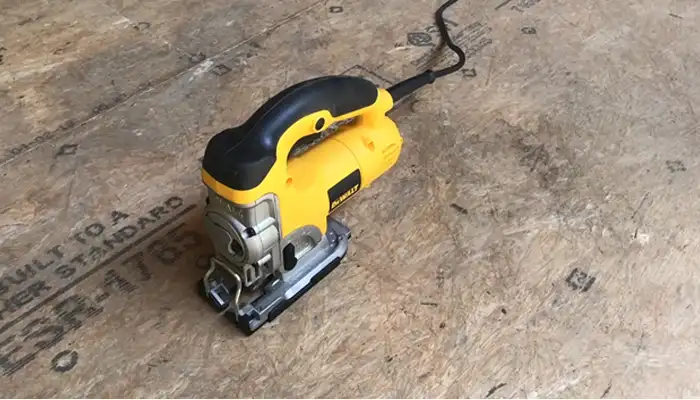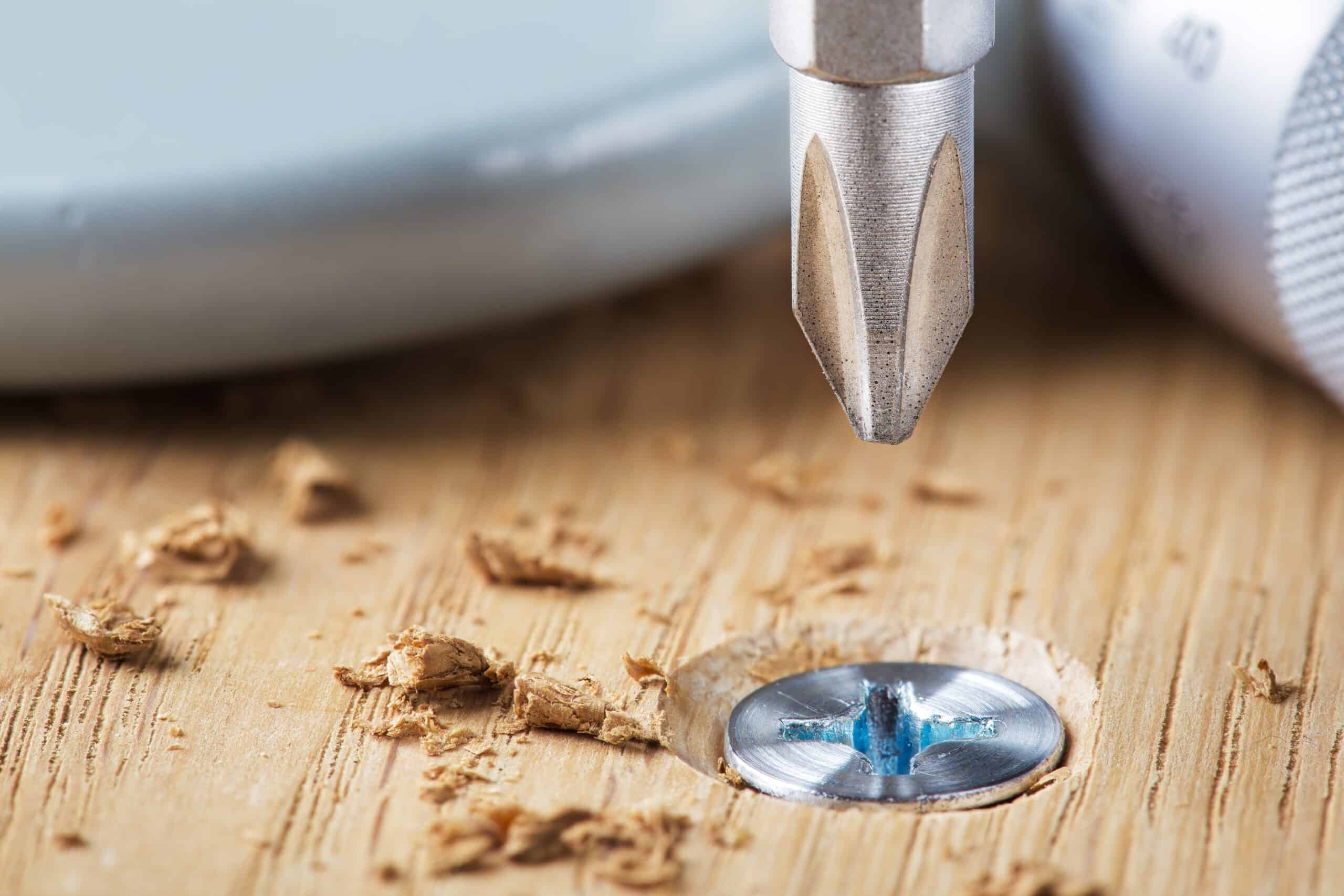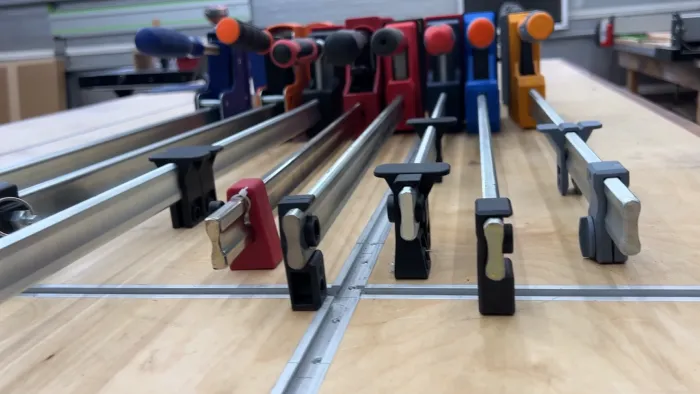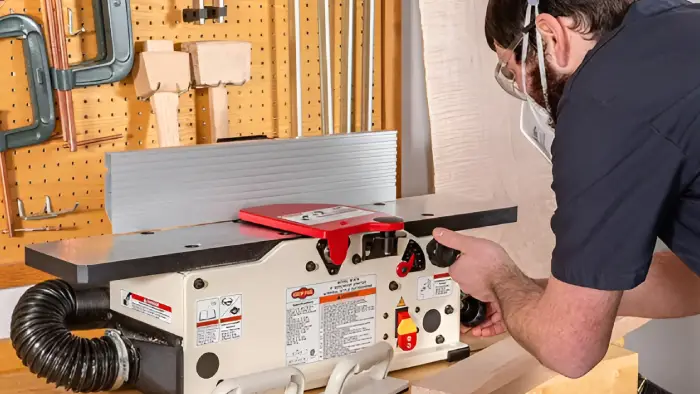WoodenuKnow.com is a participant in the Amazon Services LLC Associates Program, an affiliate advertising program designed to provide a means for sites to earn advertising fees by advertising and linking to Amazon.com and may earn from qualifying purchases.
Working with wood can be a very satisfying experience, but it can also be frustrating if your jigsaw keeps bouncing around while trying to cut through a piece of wood. Several factors can cause jigsaw bouncing, but there are a few things you can do to help stop it from happening.
The purpose of this article is to explain how to stop jigsaw bouncing and what you can do to prevent it from happening in the future. We will also cover what precautionary measures you should take to ensure your jigsaw doesn’t start bouncing in the first place.
Rather than engage in any complex discussion, we are now going to proceed directly to the next section of this post, as we don’t want to waste either our time or the readers’ time with any complex issues.
How to Stop Jigsaw Bouncing : Multiple Methods
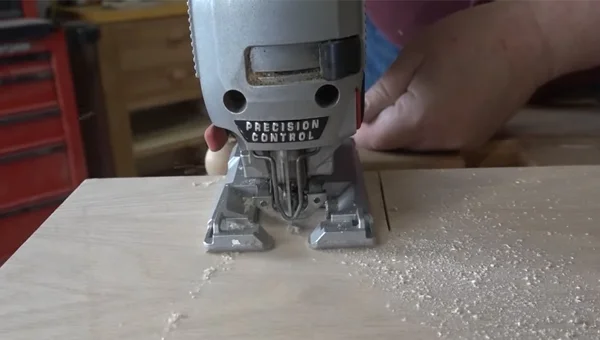
The tips discussed in the following paragraphs are intended to get you started, and we hope you find them helpful:
Use a slower speed
You can do a few things to help prevent bouncing, and one of the most effective is to use a slower speed setting. This allows the blade to penetrate the material more slowly and evenly, reducing the risk of vibrations. Using a slower speed setting can help to prolong the life of your jigsaw blades by preventing them from overheating.
So if you’re having trouble with bouncing, remember to turn down the speed on your jigsaw and take things slow. With a little patience, you should be able to get great results without any problems.
Clamp the wood securely
It is essential to clamp the wood securely to prevent the blade from bouncing. This can damage the blade and cause the cuts to be less precise. There are a few different ways to clamp the wood, depending on the type of material you are working with. For softer woods, you can use clamps that grip the wood firmly without crushing it.
For harder woods, you may need to use C-clamps or F-clamps, which will apply more pressure to hold the wood in place. Whichever type of clamp you use, make sure that it is firmly attached to the work surface before starting to cut. By taking these precautions, you can ensure that your jigsaw cuts are clean and precise.
Using the Right Blade
When cutting plywood or other softwoods, it’s important to use a blade with large, sharp teeth. These teeth will help to prevent the blade from becoming bogged down in the wood. If you’re cutting hardwoods or metals, it’s necessary to use a blade with smaller teeth. These smaller teeth will help to reduce friction and prevent the blade from binding.
It’s also important to choose the right blade speed. For most materials, a medium speed is best. For hardwoods and metals, it’s necessary to use a slower speed to prevent the blade from overheating. By using the right blade for the job at hand, you can help to stop the jigsaw from bouncing and increase your accuracy.
Make sure the wood is Straight
When using a jigsaw, one of the most important things is to make sure the wood is straight. If the wood is not straight, the jigsaw can bounce off the surface and cause damage. When the wood is not straight, it can be more challenging to control the jigsaw and make precise cuts. For these reasons, it is important to take the time to ensure that the wood is straight before beginning to cut.
This can be done by using a level or a tape measure to check for any unevenness on the surface. Once the surface is confirmed to be straight, you can proceed with confidence, knowing that your jigsaw will not bounce off and cause potential damage.
Add weight to the saw
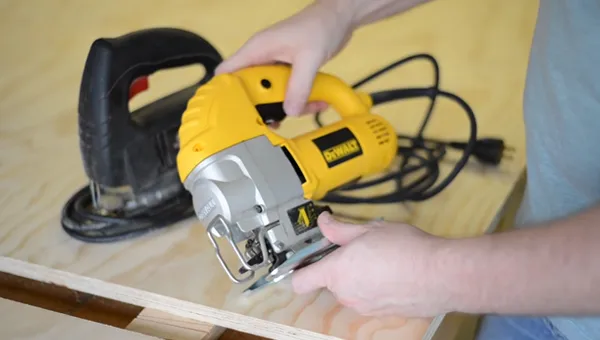
One way to help reduce bouncing is to add weight to the saw by attaching a weighted object to the handle. This will help keep the blade more stable and make it easier to control the tool, or you can try using a different blade. Some blades are designed specifically to reduce bouncing and provide a smoother, more controlled cut.
With a little trial and error, you should be able to find a blade that works well for your particular saw and project. The weight of your jigsaw can make it more likely that it won’t bounce, and you will be able to make smooth, precise cuts with your jigsaw.
Maintain a firm grip on the saw
Keeping a firm grip on the saw helps stop the jigsaw from bouncing. By holding the saw firmly in both hands and keeping your arms straight, you can provide the stability needed to keep the blade steady.
One hand should be positioned near the front of the saw, while the other should be near the back. This will help to distribute the weight of the saw evenly and prevent it from tipping forward or backward.
Keeping your fingertips away from the blade while cutting is necessary. If you accidentally lose control of the saw, it is essential to know how to turn it off quickly and safely. With a bit of practice, you can learn to use a jigsaw safely and efficiently.
Sand down rough edges
One way to prevent this is to sand down the Rough Edges before beginning to cut. Sanding the edges will help to create a smoother surface for the blade to glide over, and it will also prevent it from bouncing.
Sanding will help to remove any splinters or rough spots that could catch on the blade and cause it to skip. By taking the time to sand down the edges, you can ensure a clean cut and a beautiful finished product.
Closely hold your hands and arms
When using a jigsaw, it’s essential to keep your hands and arms close to your body. If your hands are too far away from your body, the jigsaw will bounce off the workpiece and make it difficult to control. When you keep your arms and hands close to your body, you’ll be able to keep the jigsaw under control and make cleaner cuts.
This is because the closer your hands are to your body, the more stable the jigsaw will be. Keeping your arms close to your body will help you to apply controlled pressure to the jigsaw, making it easier to cut through more rigid materials. So next time you’re reaching for the jigsaw, remember that you prefer keeping your arms and hands close by for better results.
Cut Steadily
Jigsaws need to be used steadily, so when using one, it’s essential to use a steady motion. This means moving the jigsaw at a consistent speed and not stopping and starting abruptly. It’s helpful to keep the blade perpendicular to the surface you’re cutting. If the blade is tilted, it can cause the jigsaw to bounce more. By following these tips, you can ensure your cuts are smooth and accurate.
Jigsaws are valuable tools for cutting straight or curved lines in wood, metal, or plastic. They’re relatively easy to use but can be dangerous if not used properly. That’s why it’s a good idea to keep a steady pace. With a little practice, you’ll be able to make clean, precise cuts with your jigsaw.
Only Pressure the Forward-Moving Blade
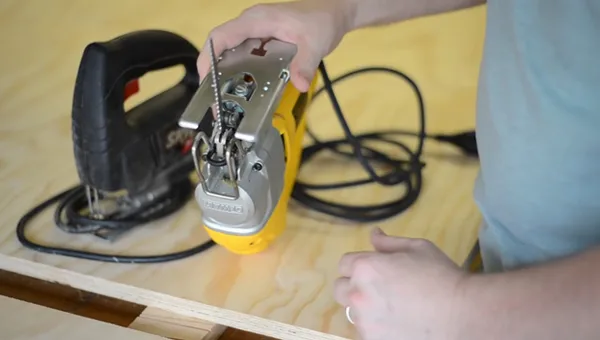
Applying pressure only to the forward-moving blade is a common way to stop the jigsaw from bouncing. When cutting a curve, the back of the blade wants to rise and push against the workpiece. On the other hand, the front of the blade is pulled down by gravity.
By putting pressure only on the front of the saw blade, you can counterbalance the force of the back of the blade and keep it from bouncing. This technique takes some practice, but once you get the hang of it, you’ll be able to cut curves more smoothly and accurately.
Always Maintain The Saw
Always maintaining the saw prevents the jigsaw from bouncing. A saw is a mighty tool that can accomplish many tasks, but it is only as good as its operator. One of the most valuable things to remember when using a saw is always maintaining it. This means keeping the blade clean and sharp and ensuring that the saw is adequately lubricated.
When a saw is well-maintained, it will cut more smoothly and with less vibration. This is especially important when using a jigsaw, as a bouncing blade can damage the material being cut and the saw itself. By taking the time to maintain the saw, operators can help to extend its life and ensure that it will continue to perform at its best.
FAQs
Many questions are going around the internet that are frequently asked, and here are some answers to them. Those were the questions we tried to answer as precisely as we could:
Why won’t my jigsaw cut straight?
There are a few different reasons why this may be the case. First, if you’re using an older jigsaw, it may not have guide bearings, which are necessary for making straight cuts. Second, the blade itself may be dull or damaged, preventing it from cutting cleanly through the material.
The table on which the jigsaw is mounted may not be level, causing the blade to tilt as it cuts. By taking these factors into account, you can troubleshoot why your jigsaw isn’t cutting straight and find a solution.
What is the pendulum setting on a jigsaw?
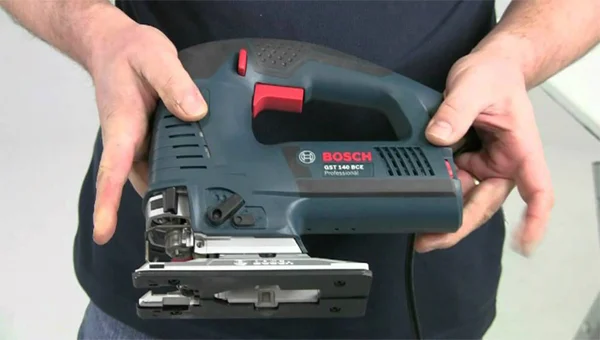
The jigsaw’s pendulum setting is a feature that allows you to move the blade in a circular motion. This can be useful for making curved cuts or for following a template.
To use the pendulum setting, simply hold down the trigger and move the saw back and forth. The speed of the blade will increase as it moves away from the center, making it easier to make curved cuts.
You can also use the pendulum setting to make straight cuts, but you’ll need to be careful not to overdo it, or you’ll end up with a wavy cutting line. With a bit of practice, you’ll be able to master the pendulum setting and make beautiful, precise cuts.
What speed should I set my jigsaw?
When using a jigsaw, it is generally best to set the speed to the highest setting. This will result in the fastest and most efficient cut. If you encounter resistance or bouncing while cutting, it is necessary to reduce the speed slightly.
Running the jigsaw at too high of a speed can damage the tool and the material being cut. Therefore, it is essential to pay attention to both the speed setting and the condition of the material being cut. By following these guidelines, you can ensure that your cuts are clean and precise.
Why does my jigsaw blade keep coming out?
There are several reasons why this may happen. One possibility is that the blade is not correctly inserted into the tool. Another possible scenario could be that the blade is not compatible with the jigsaw.
It’s also possible that the blade is damaged or worn out and needs to be replaced. If you’re having trouble with your jigsaw, it’s important to troubleshoot the problem so that you can get back to work as soon as possible.
Last Words
We would like to conclude by saying that those were the tips, tricks, and answers to the frequently asked questions about jigsaws. We hope you found this guide helpful and that you now have a better understanding of how to stop jigsaw bouncing from happening.
If you have any further questions, please feel free to ask in the comments below, and we will do our best to answer them. It would be helpful if you could share this with other people if you think they are constantly struggling with the same issue. This will help them to get over it.
For now, let’s say goodbye to each other. Our team looks forward to seeing you again on our website with any other article we have to offer. Thank you for taking the time to read this article.
Related Article: What are the symptoms and causes of Jigsaw Smoking?

